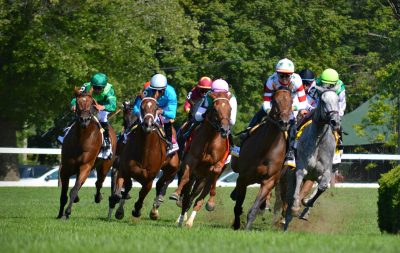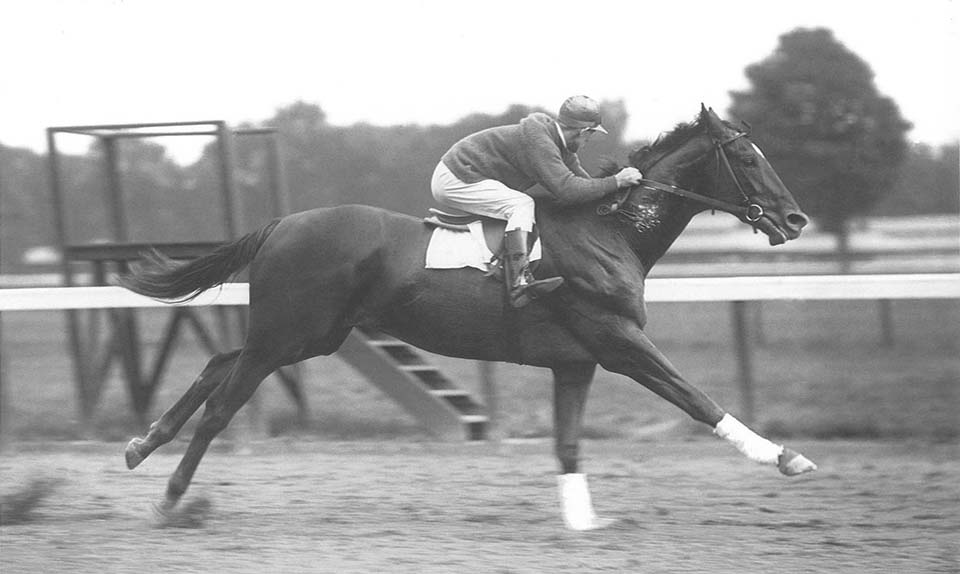How to Bet on the Belmont Stakes?
Expert Picks, Odds, Preview, Horse profiles and Pedigrees
Belmont Stakes Time
The Belmont Stakes field will break from the gate at 5: 42 p.m. ET.
The first running of the Belmont Stakes was in 1867 and took place at Jerome Park on a Thursday.
The first Belmont Stakes was 1 5/8 miles long, a distance not typically contested anymore in North America, and the conditions included: “$200 each; half forfeit, and $1,500-added.
The second to receive $300, and an English racing saddle, made by Merry, of St. James Street, London, to be presented by Mr. Duncan.”

Horse Racing – USR Photo
Belmont Stakes Historical Locations:
The Belmont Stakes is the oldest of the Triple Crown events, predating the Preakness Stakes by six years and the Kentucky Derby by eight.
Aristides, the winner of the first Kentucky Derby, ran second in the 1875 Belmont behind winner Calvin.
The Belmont Stakes is one of the oldest stakes races in North America. The Phoenix Stakes at Keeneland was first run in 1831, the Queens Plate in Canada in 1860 and the Travers was first contested at Saratoga Race Course in 1864.
The Belmont is actually third to the Phoenix and Queen’s Plate in total runnings as The Travers has had gaps in its history will be contested for the 151st time this year.
In 1890, the Belmont Stakes was moved from Jerome Park to Morris Park, a 1 3/8-mile track located in The Bronx. The Belmont Stakes was run at Morris Park until Belmont Park opened in 1905.
The 1921 Belmont was the first to be run in the counter-clockwise direction. In previous years it had been run clockwise, in accordance with English custom, over a fish-hook course that included part of the training track and the main dirt oval.
The first post parade in the United States was in the fifth running of the Belmont Stakes in 1871.
The purse for the first running of the Belmont was $1,500-added with a total purse of $2,500 and the winner’s share of $1,850 was taken by the filly Ruthless.
The lowest winner’s share in the history of the Belmont Stakes was the $1,825 earned by The Finn in the 1915 running. The 1992 edition of the Belmont was the richest running with a total purse of $1,764,800. A.P.
Indy won and collected $458,880 of the purse while Pine Bluff earned the lion’s share of $1,091,776 for finishing third thanks to the $1 million bonus paid by Chrysler Corporation awarded to the owners of the horse with the highest combined Triple Crown finish as part of the Triple Crown Bonus Program. Pine Bluff was fifth in the Derby before winning the Preakness.
Belmont Stakes Odds
| PP | Horse | Odds | Jockey | Trainer |
|---|---|---|---|---|
| 1 | Tap It To Win | 6-1 | John R. Velazquez | Mark E. Casse |
| 2 | Sole Volante | 9-2 | Luca Panici | Patrick L. Biancone |
| 3 | Max Player | 15-1 | Joel Rosario | Linda Rice |
| 4 | Modernist | 15-1 | Junior Alvarado | William I. Mott |
| 5 | Farmington Road | 15-1 | Javier Castellano | Todd A. Pletcher |
| 6 | Fore Left | 30-1 | Jose Ortiz | Doug O’Neill |
| 7 | Jungle Runner | 50-1 | Reylu Gutierrez | Steven M. Asmussen |
| 8 | Tiz The Law | 6-5 | Manny Franco | Barclay Tagg |
| 9 | Dr Post | 5-1 | Irad Ortiz, Jr. | Todd A. Pletcher |
| 10 | Pneumatic | 8-1 | Ricardo Santana, Jr. | Steven M. Asmussen |
Miriam Lee has always been a horse racing fan thanks to trips to the tracks in her home state of Maryland with her father as kid. She owns an OTTB and is an advocate for promoting the sport among her peers. Miriam studies communication arts at Hood College and will receive her master’s degree in 2021, which she plans to use for a career in screenwriting. Her all-time favorite racehorse is Man O War.




